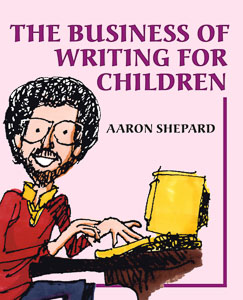Your first book may be a masterpiece, but first books have a nasty way of getting ignored. Bookstores may not bother to order it. If they do carry it, store personnel may not know it’s on the shelf. Another problem is that, if your book appeals to special audiences, your publisher may not know how to reach them.
My own first picture book was Savitri: A Tale of Ancient India (Whitman, 1992), a retold 3,000-year-old story of a princess who outwits the god of death to save her husband’s life. Here are ten methods I used to boost recognition of the book.
1. Throw a book party. I mailed out 200 invitations to friends, booksellers, librarians, reviewers, and everyone else in my community I wanted to let know about Savitri. I didn’t expect them all to come, but I at least made them aware of the book. The party cost me nothing, because I held it at my home, asked friends to bring potluck desserts or beverages, and sold books during the party.
2. Visit local bookstores and libraries. I showed the book to my local booksellers and librarians and encouraged them to order it. From this came several invitations for storytelling/signings, plus a bookstore offer to host receptions for future books.
3. Compile a list of reviewers. Usually your publisher will ask you for a list of periodicals that would be especially interested in your book. If the book appeals to one or more specialized audiences, this is particularly important. From standard library references such as The Encyclopedia of Associations and Ulrich’s International Periodicals Directory, I made a list of Hindu, yoga, and Indo-American publications, including newsletters of major organizations. Having been a professional storyteller, I also listed storytelling publications and children’s radio shows.
4. Compile a list of retailers. Your publisher may ask also for a list of bookstores for special notification. Again, this is most important for a specialized book. From telephone directories at my library, I made a list of bookstores specializing in Eastern religion, along with a smattering of educational resource, feminist, New Age, and museum bookstores. Small, specialized booksellers are often overlooked by publishers’ sales representatives, but can be major sales outlets if your book meets their needs.
Normally, stores on your list are notified by the publisher, but I took care of this myself, so I could add personal notes. In an age of computerized mailings, a scribbled note gets attention!
5. Offer school visits. My first school visit came just a couple of months after publication, from someone on my review copy list. After that, I sent notices of my availability to a number of schools, along with information on me and my book. (Such mailings work best if you follow up with phone calls.)
6. Produce an instructional aid. This is something for use in the classroom in conjunction with your book. Drawing on my experience in reader’s theater, I produced a script adaptation of Savitri. My hope was that teachers who used the script would also want the picture book to share with students.
As it happened, Whitman’s promotions director declined to use the script in the publisher’s promotional efforts. But it is now posted on my Web site (www.aaronshep.com) and is also included in my published collection of reader’s theater adaptations, Stories on Stage.
7. Join organizations. In order to link up with people who buy and promote books, I joined the Association of Booksellers for Children, the Northern California Children’s Booksellers Association, the Association of Children’s Librarians (for the San Francisco Bay area), the California Reading Association, and the Sacramento Area Reading Association.
The newsletters of these organizations are very informative, and the meetings are great places to get known. For instance, I arranged to read Savitri at a monthly meeting of the Northern California Children’s Booksellers Association—in this way reaching many of the area’s children’s booksellers at one time.
8. Attend events. In the half year after Savitri’s publication, I attended—at my own expense—the American Booksellers Association convention in Anaheim, the American Library Association convention in San Francisco, the Celebration of Children’s Literature at the University of California, Berkeley, and the Northern California Booksellers Association convention in Oakland. At each of these events, I found many opportunities to show the book to people who could help it along. (I also made friends and had a lot of fun.)
9. Write an article. In case you haven’t noticed, this article too was meant as a way to promote the book—as well as a way to share useful information.
10. Work on your next book. There is no end to the ways you can promote a book, or to the time you can spend doing it. But the very best way is to work on your next one. Repeated publication builds your reputation and sales potential better than anything else. So, promote your work, but don’t forget that your readers are waiting for more!
